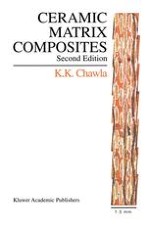After an introductory chapter, the processing, microstructure, and properties of various ceramic materials, reinforcements, and their composites are described. A separate chapter is devoted to processing of ceramic reinforcements, with a special emphasis on fibers. Processing of ceramic matrix composites is the next chapter, which includes novel techniques such as sol-gel processing and ceramics from polymeric precursors. The next four chapters cover the subjects of interface region in ceramic composites, mechanical and physical properties, and the role of thermal stresses and the important subject of toughness enhancement. Laminated composites made of ceramics are described in a separate chapter. Finally, a chapter is devoted to various applications of ceramic matrix composites. Throughout the text, the underlying relationships between the components of the triad: processing, microstructure, and properties are brought out. An exhaustive list of references and suggested reading is provided.
